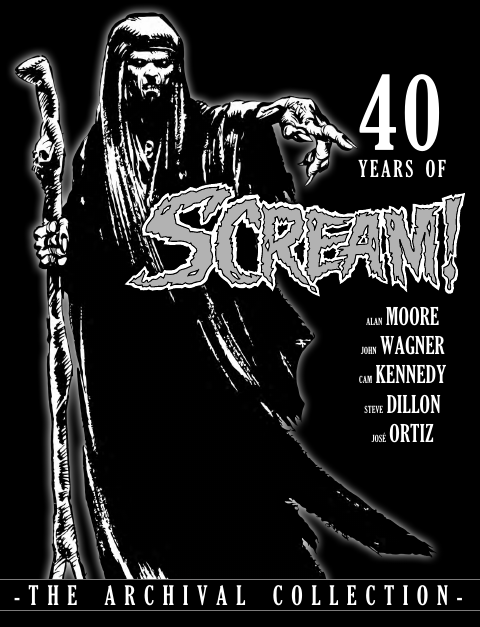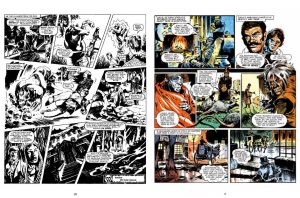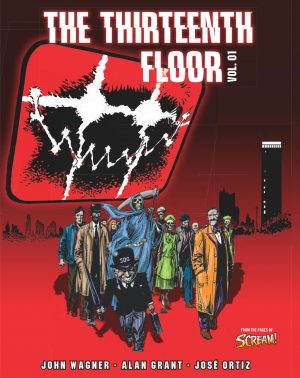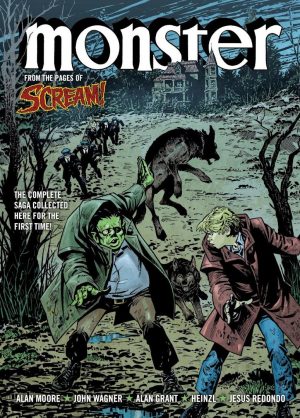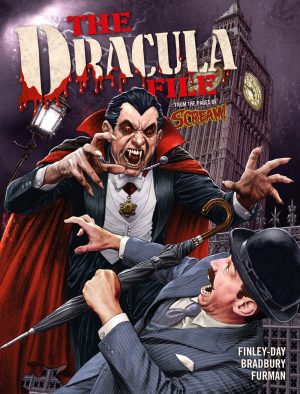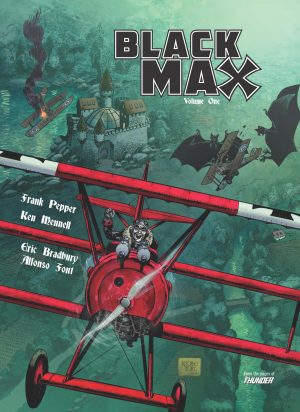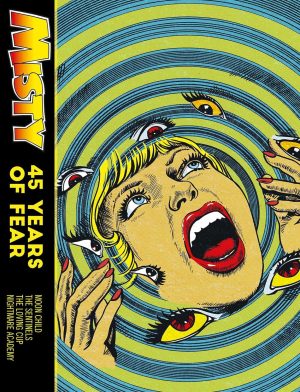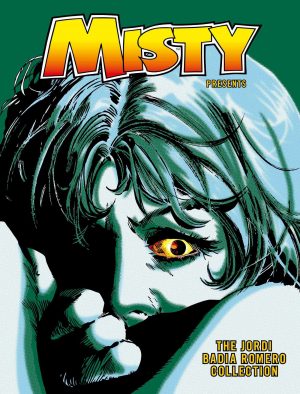Review by Frank Plowright
Noted as an Archival Collection, this reprints all fifteen issues of a horror comic commissioned by a British publisher in the 1980s, then disembowelled issue by issue, meaning what was actually seen was a pale reflection of creative intention. Furthermore, don’t become too excited by the cover list of creators. Alan Moore’s contribution is a mere four pages from the 468 supplied, Steve Dillon draws five, and Cam Kennedy ten over two strips.
The important choice of opening strip was ‘The Dracula File’ produced by Gerry Finley-Day and Eric Bradbury, whose vision was of Russia resurrecting Dracula to unleash him on the West. The early episodes have a kitsch charm after which it takes a strange bowdlerised trip. It’s one of three strips already issued as collections. ‘The Thirteenth Floor’ is Alan Grant and John Wagner supplying the creepy story of a tower block computer running amok and terrifying victims in a sort of holodeck, really nicely drawn by José Ortiz, and ‘Monster’ features Moore’s opening chapter as orphaned Kenny cares for his mutated brother.
‘Fiends and Neighbours’ also runs in every issue, considering what if the Munsters moved in next door? Those two pages of comedy contrast the remainder with Graham Allen’s wonky cartooning making the most out of what are weak scripts from Les Lilley. John Richardson (sample art left) draws both other scripts running to more than three parts. He does his best with ‘Terror of the Cats’, in which a town is terrified by feral pussy cats, but the premise is utterly ludicrous. ‘The Nightcomers’ by Tom Tully at least has the interesting idea of stage magicians as paranormal investigators, their deaths in turn being investigated by their adult children. Tully writes to a formula, but isn’t always predictable.
The remaining content is too many sting in the tail stories, often period pieces, by an assortment of creators. Among the better examples is Ian Rimmer and Jim Watson’s two parter about an arrogant judge little caring he’s sent the wrong man to the gallows. Watson (sample art right) supplies a gothic mood to anything he draws, while Kennedy’s also worth mentioning for bringing a disturbingly dark touch to story about a Punch and Judy show. Brendan McCarthy drawing several tales is surprising, although they’re very traditional, strictly for the money rather than artistically innovative.
For all the good intentions, it’s only in the final issues that Scream begins to show some life, and in the interests of fairness it’s worth asking how good the first issues of longer running anthology titles were. The likes of Trevor Goring and Steve Parkhouse bring different artistic values, Watson continues to impress and Casanovas excels on Simon Furman’s script about a terrifying trip to an Egyptian burial chamber.
Perhaps if you were exactly the right age for a chilling fix in the mid-1980s this collection will still hit a spot. Perhaps if the editors had been allowed to follow their instincts without having to second guess the publisher what saw print may have been much better. However, much as we’d love to say otherwise, this is no lost gem.
